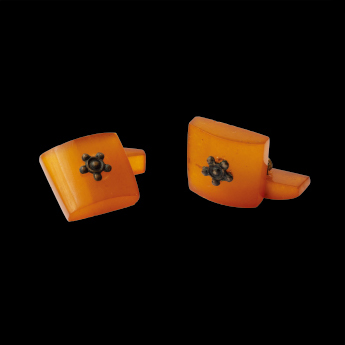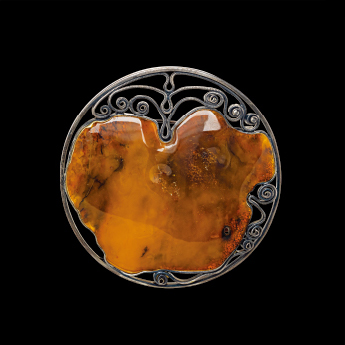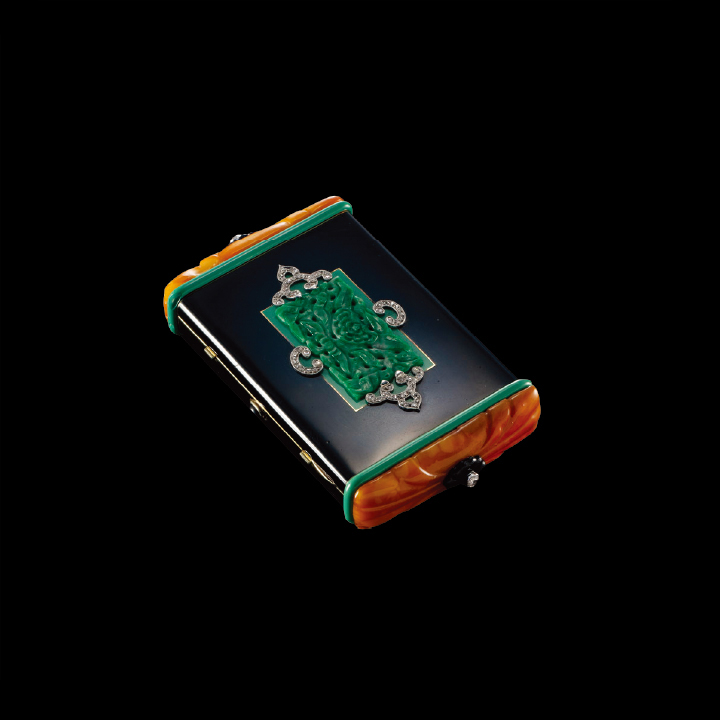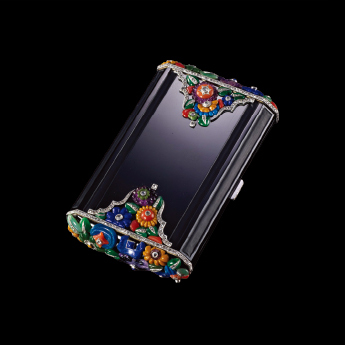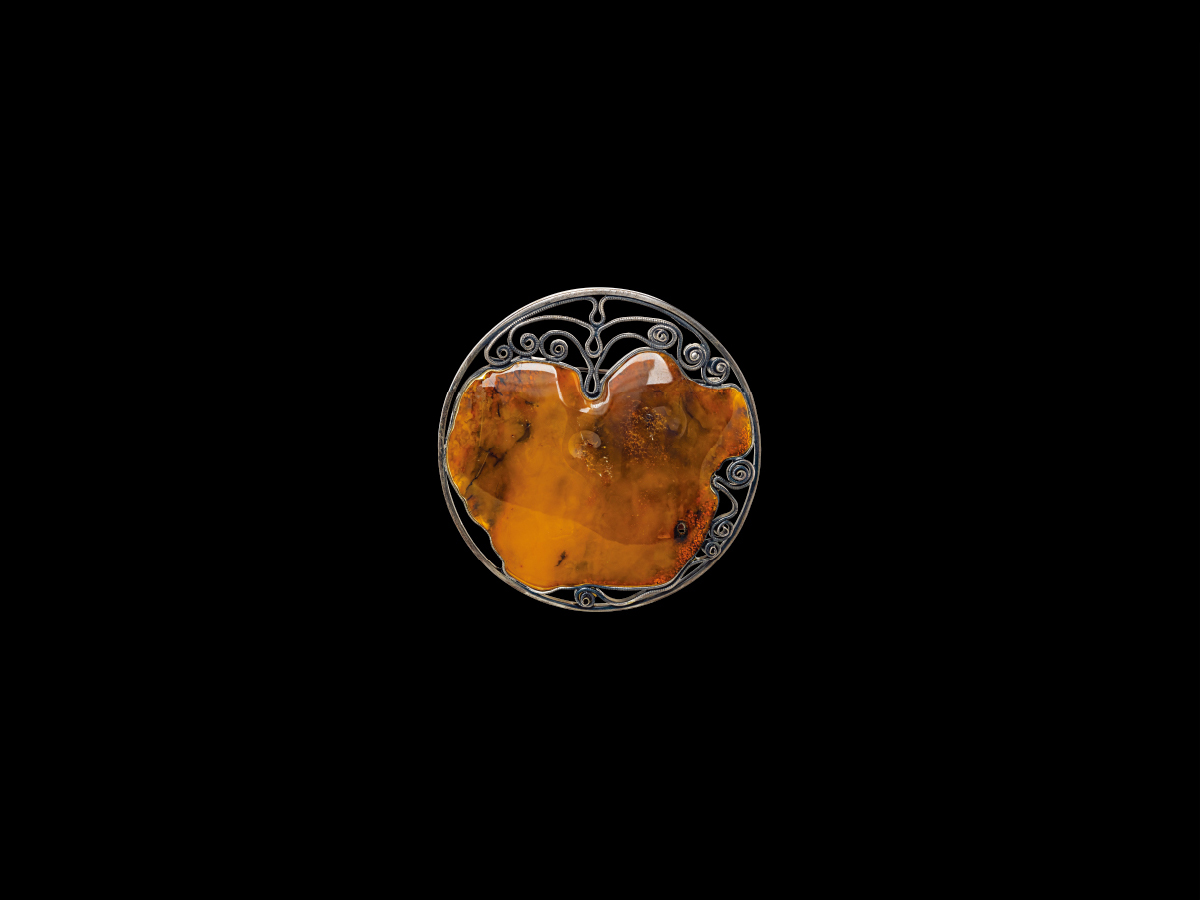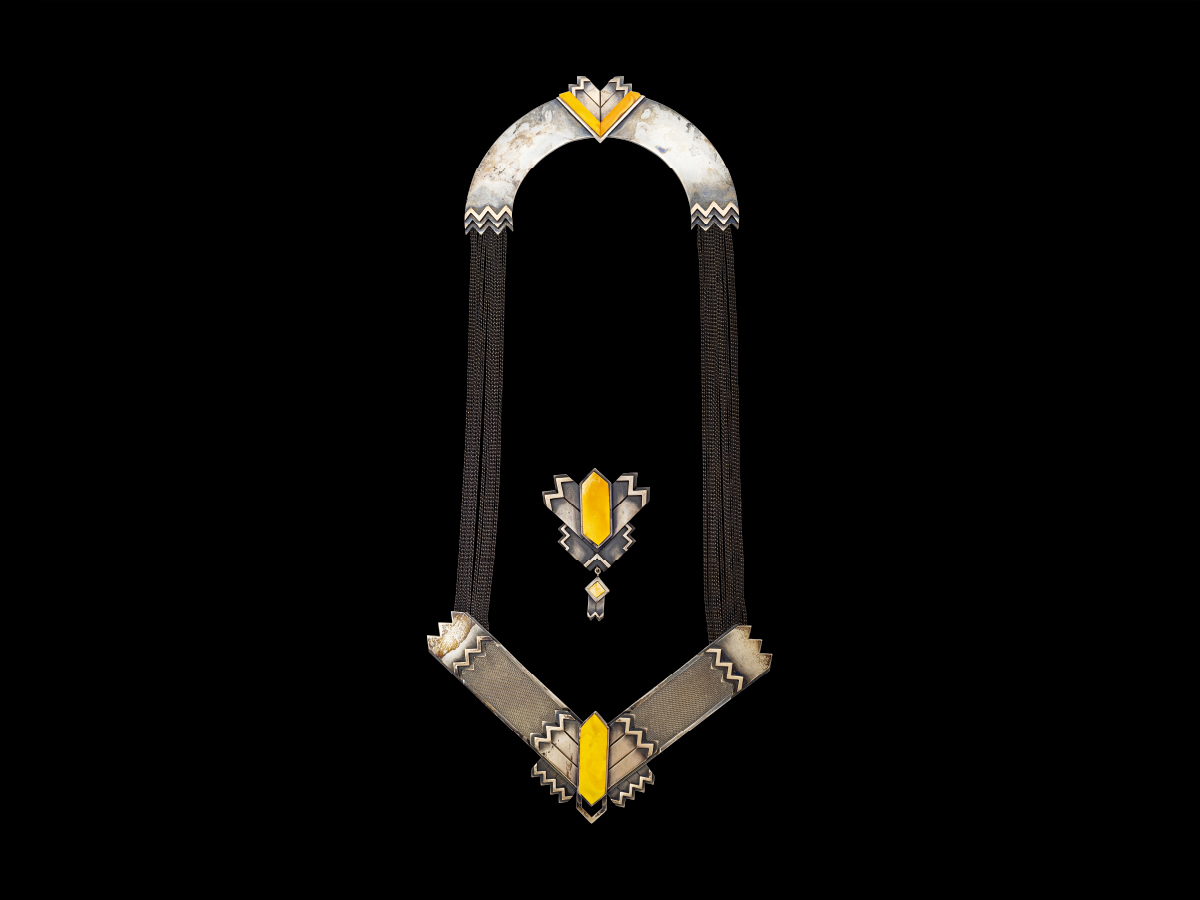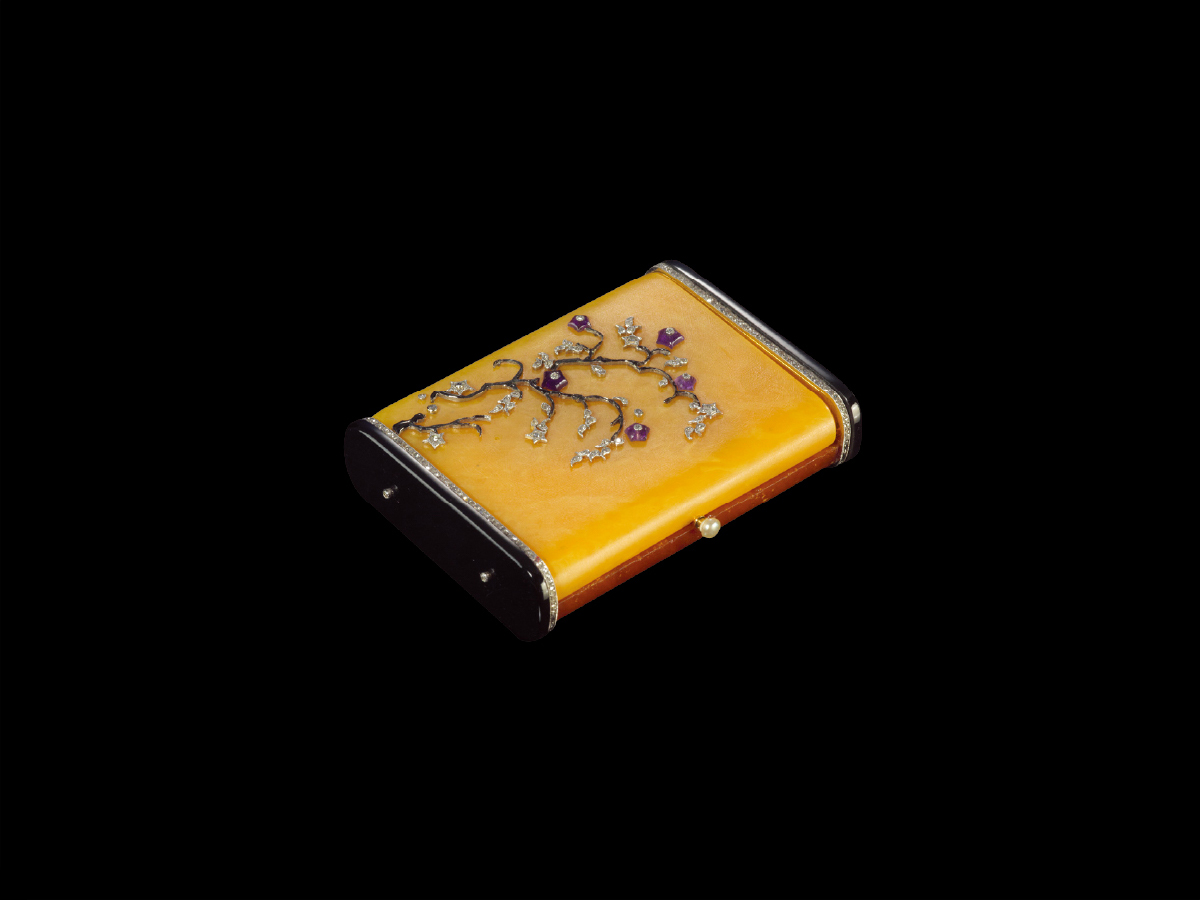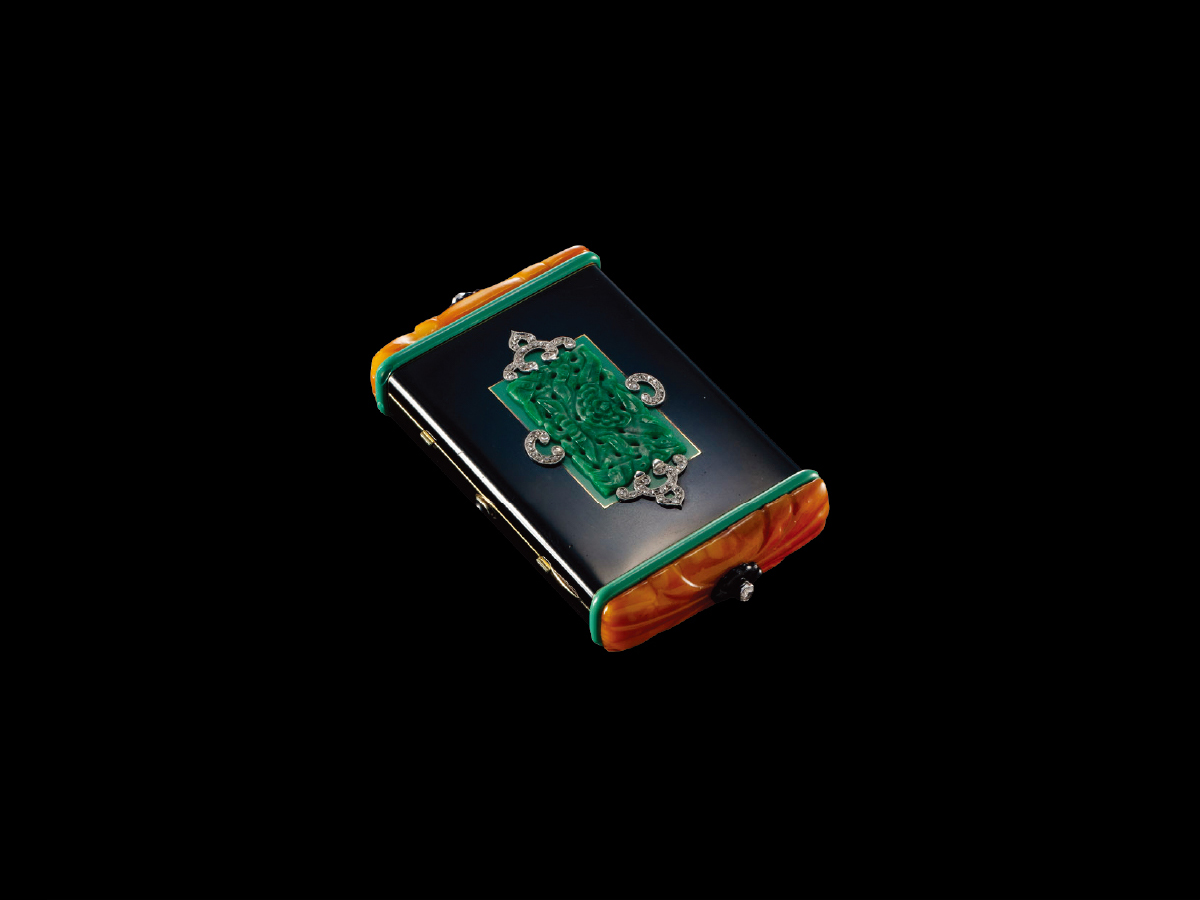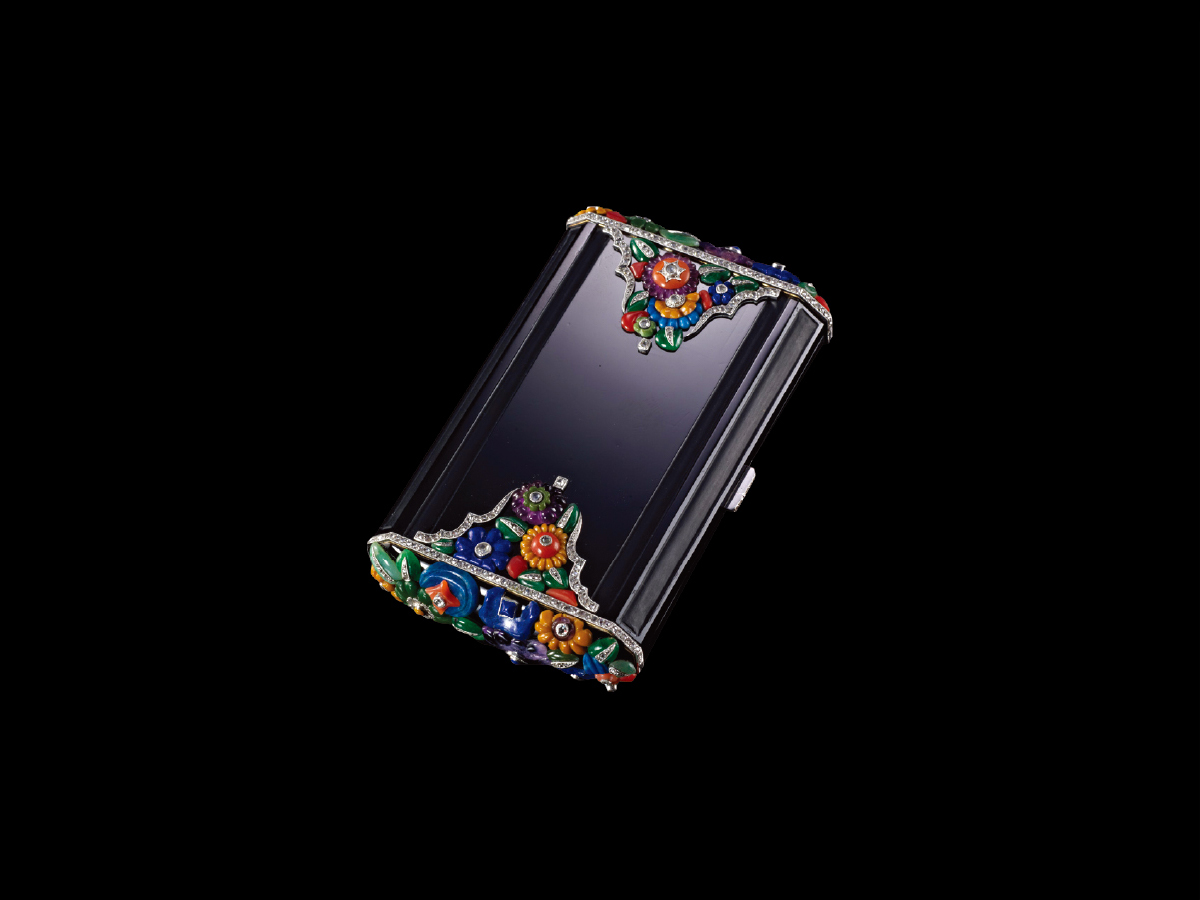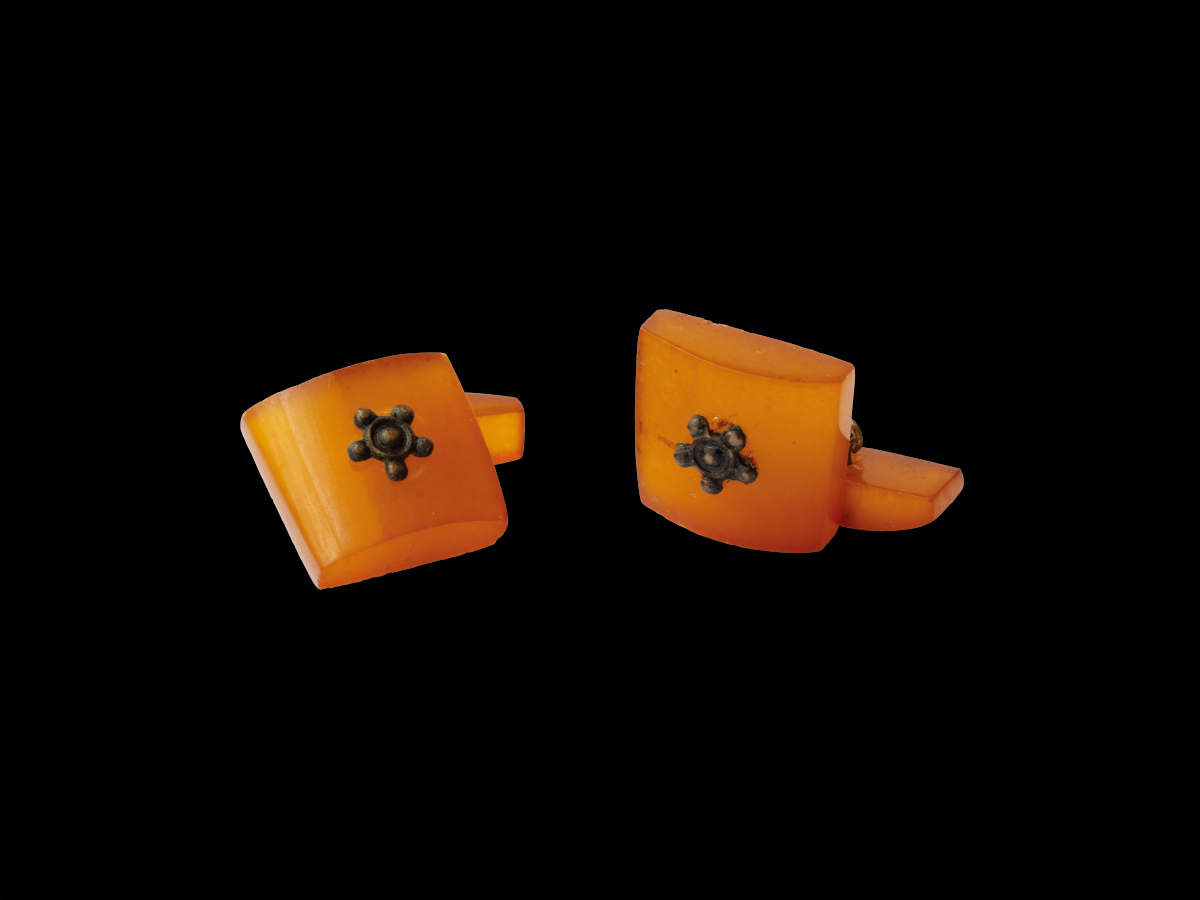20th-Century Amber
Between the two World Wars, European designers and jewellers returned to amber as an exotic and little-known material. Luxury houses, like Cartier, Mauboussin and Lacloche Frères, combined amber with gold, diamonds, and coral in wonderful Art Deco style vanity cases. For the middle-class market, amber was used on such accessories as men’s cufflinks, playing pieces, and cigarette holders. Amber’s strong appeal can also be gauged by an increase in the number of fake amber artefacts from that period.
In the Baltic states, amber’s status and role was transformed by the Soviet occupation after World War II. Under Soviet control, amber-rich countries like Lithuania, Latvia, Estonia, and Poland became centres of amber mining and production. To appeal to the tourist industry, workshops produced standardized objects with amber detailing, such as tankards, shields, candlesticks, and necklaces. The Soviet branding of the material was such that amber acquired pejorative associations for the populations. Only after the end of Soviet occupation did local artists and designers begin to retrieve amber’s artistic heritage and traditional styles. This has led to a rejuvenation in amber jewellery and decorative designs.
Jānis Sudmalis (1887-1984)
Necklace1961
Amber
Diam. 20 cm
Latvian National Museum of Art, Collection of the Decorative Arts and Design Museum
Līvija Andrukaitīte (1936-2000)
Necklace and Ring1971
Amber, cupronickel
Necklace: H. 28 cm x L. 17 cm
Ring: H. 4.5 cm x L. 3.5 cm x W. 2 cm
Latvian National Museum of Art, Collection of the Decorative Arts and Design Museum
Eižens Auniņš (1911-1992)
Brooch1976
Amber, metal
H. 7.1 cm x L.7.1 cm
Latvian National Museum of Art, Collection of the Decorative Arts and Design Museum
Dina Dubiņa (b. 1955 )
Necklace based on Jūlija Madernieks’ Jewellery Set1983
Amber, cupronickel
Necklace: L. 38 cm x W. 17 cm
Brooch: H. 8 cm x L. 5.5 cm
Latvian National Museum of Art, Collection of the Decorative Arts and Design Museum
Lacloche Frères Compact
c. 1925Amber, onyx, gold, enamel, diamond, amethyst and pearl
H. 5.22 cm x L. 7.29 x W. 1.57 cm
Liang Yi Museum
Cartier Compact
c. 1925Gold, enamel, jadeite, diamond, amber
H. 4.6 cm x L. 8.2 cm x W. 1.3 cm
Liang Yi Museum
Mauboussin Compact
c. 1920Platinum, coral, diamond, onyx, fine stone, amber
H. 5.18 cm x L. 8.75 cm x W. 1.51 cm
Liang Yi Museum
Cufflinks with Silver Star
Mid-20th centuryAmber, silver
H. 1 cm x W. 1 cm
Philippe Thomas Collection



